There are many spectacular locations in Rhode Island, including historical sites, magnificent Gilded Period homes, lovely beaches, and coastal lighthouses.
The smallest state in terms of area is Rhode Island. It has a 1,214-square-mile footprint. This state is 48 miles from North to South and 37 miles from East to West. The last of the original thirteen colonies to gain statehood was Rhode Island. Along with a rich history and stunning landscapes, this East Coast state is home to a plethora of animals.
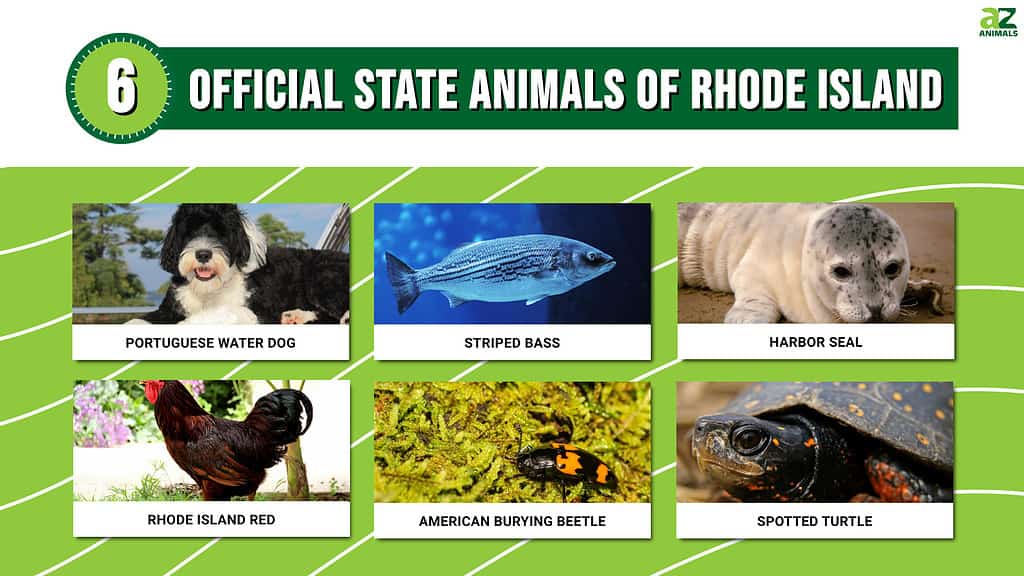
Let’s take a look at what critters represent Rhode Island, along with a little snippet about each animal!
State Dog: Portuguese Water Dog

Because the Portuguese water dog breed’s genetic lineage dates back 800 years, it is largely unknown.
©Lynda McFaul/Shutterstock.com
There’s no better way to start off than with man’s best friend! The state dog that represents Rhode Island is the fluffy Portuguese water dog. Portuguese water dogs were once utilized as a part of the crew on fishing trips to locate lost gear and push fish into nets.
This breed of dog still possesses the intelligence, fondness of the water, and webbed feet that made them so indispensable to their human families, as demonstrated by Bo Obama, a former First Dog of the United States. Nowadays, they also make wonderful household pets.
Poodles are believed to be the Portuguese water dog’s closest relative, yet the breed’s genetic lineage is unknown because it stretches back about 800 years. That all makes sense when you look at them because there are significant similarities between the two breeds.
State Fish: Striped Bass
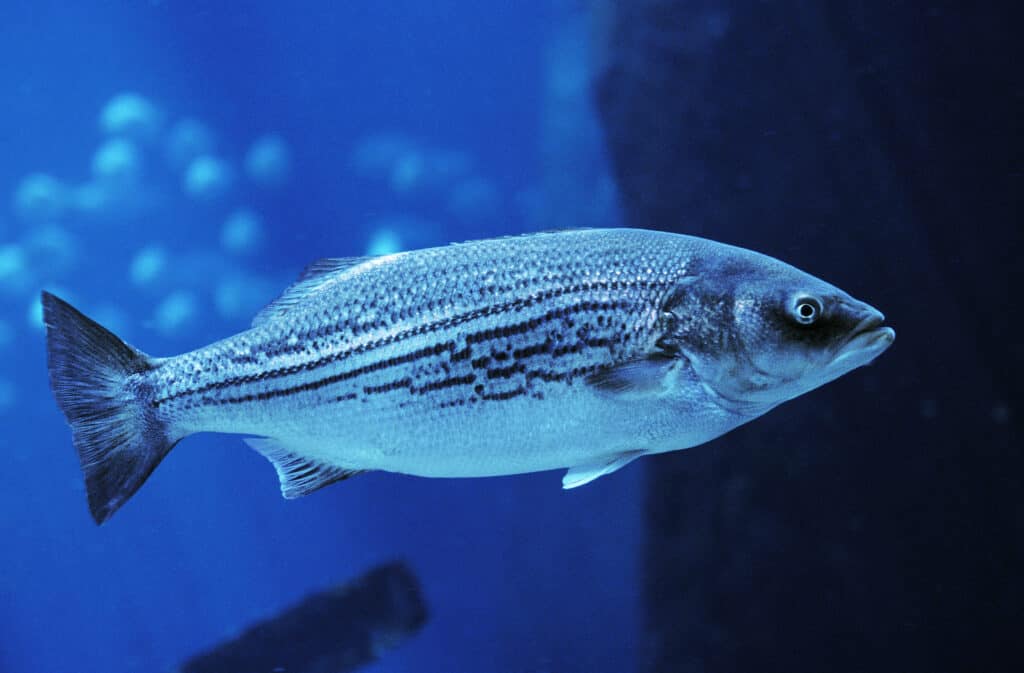
The striped bass became the official state fish of Rhode Island in 2000.
©slowmotiongli/Shutterstock.com
In 2000, Rhode Island declared the striped bass (Morone saxatilis) as its official state fish. The striped bass is also the state fish of Virginia, New Hampshire, and New York. Striped bass is a highly sought-after recreational game fish.
They are also known as bass, linesiders, stripers, and rockfish. The lifespan of striped bass is at least 30 years, and they can reach lengths of over four feet. Females typically develop substantially larger than males and take between five and eight years to attain sexual maturity.
Simply put, striped bass has a mouthwatering flavor. The flesh is white and flaky, with just enough fat to give it an almost buttery appearance but not enough to give it an oily appearance.
State Marine Animal: Harbor Seal
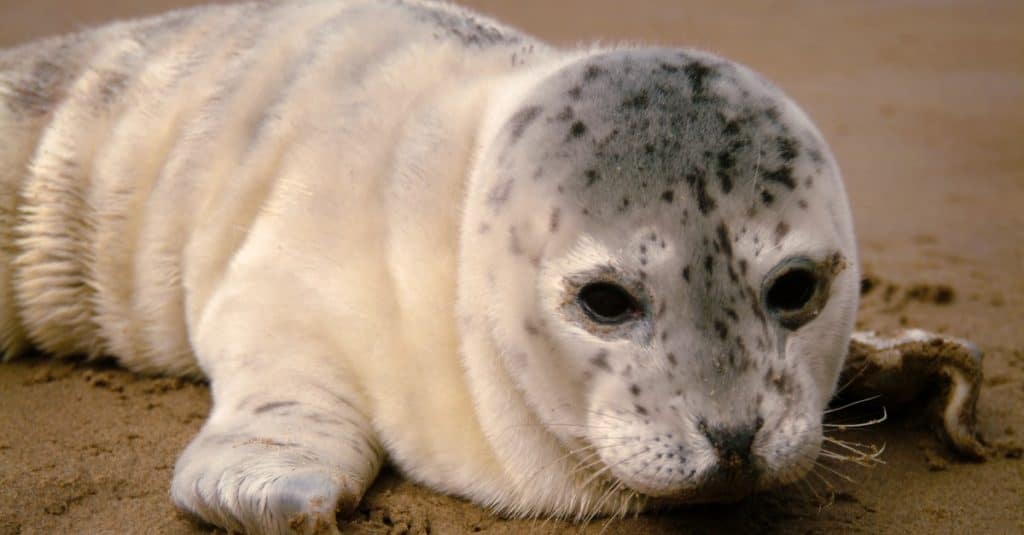
The
harbor seal
is a relatively new addition to Rhode Island’s state animals, being declared the state marine animal in 2016.
©Edmund Lowe Photography/Shutterstock.com
The harbor seal is the recognized state marine mammal of Rhode Island. In 2016, Governor Raimondo authorized the law’s passage. Like all marine mammals, harbor seals (Phoca vitulina) are protected by the MMPA (The United States Marine Mammal Protection Act of 1972).
The male harbor seals are a little bigger than the females; they are enormous mammals that measure approximately six feet long and weigh about 245 pounds. They eat mostly fish, shellfish, and crabs, and they have a 25- to 30-year lifespan.
Mature harbor seals may submerge for up to 30 minutes and descend to a depth of 1500 feet. They depend on their incredible capacity to store oxygen for this. In comparison to other land animals their size, harbor seals have a greater volume of blood. Increased blood means more space for oxygen, hence being able to hold their breath longer!
State Bird: Rhode Island Red
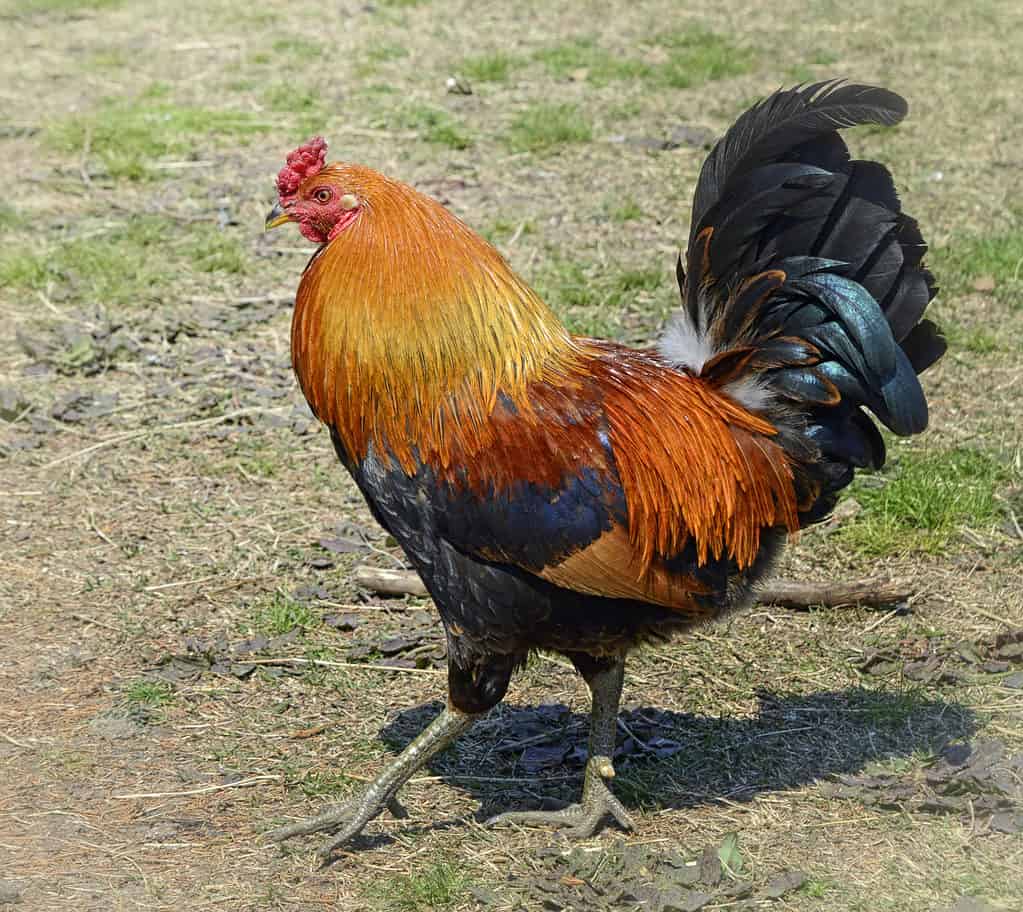
Former Rhode Island Governor Dennis J. Roberts signed into law the Rhode Island Red as the state bird of Rhode Island in 1954.
©iStock.com/Lois_McCleary
The Rhode Island Federation of Garden Clubs, the Providence Journal Company, and the Audubon Society of Rhode Island organized a state bird election in 1954. Around noon on May 3, 1954, the Rhode Island Red defeated its closest rivals, the osprey and ruby-throated hummingbird, to become the state bird of Rhode Island.
Governor Dennis J. Roberts declared, “The Rhode Island Red has become a symbol of Rhode Islanders all across the world,” as he signed the bill into law. With other breeds, they can be demanding and pushy, but they most definitely have personality! These are resilient chickens that are resistant to illness.
The head of a Rhode Island Red is held high, while the tail is angled at a 45-degree angle. Their feathers are condensed because they are short, which is a characteristic of the Malay breed that gave rise to this breed.
State Insect: American Burying Beetle
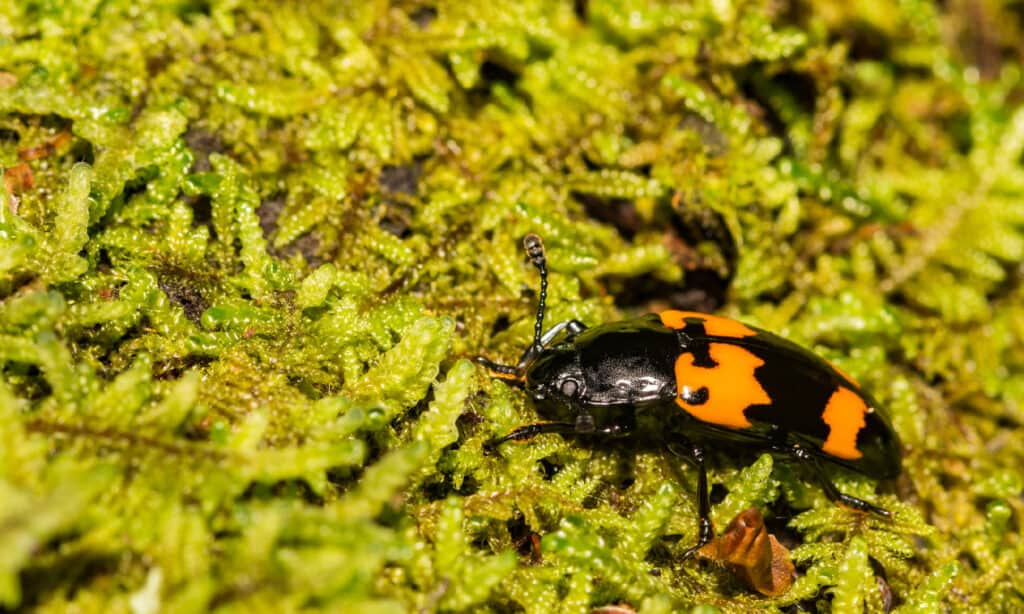
You’ll most easily find American burying beetles in the United States on Block Island, south of mainland Rhode Island.
©iStock.com/JasonOndreicka
Only a person who loves bugs would love the state insect of Rhode Island! The American burying beetle is a highly unique bug, despite the fact that it lacks a lot of personality.
The American burying beetle is the most uncommon bug in North America, and it is mostly found on Block Island. 5,000 American burying beetles have been raised since 1994 as part of the conservation effort at the Roger Williams Park Zoo in Providence.
In 1989, it was listed as an endangered species. The American burying beetle’s status was changed to threatened in November 2020 as a result of outreach activities.
State Reptile: Spotted Turtle
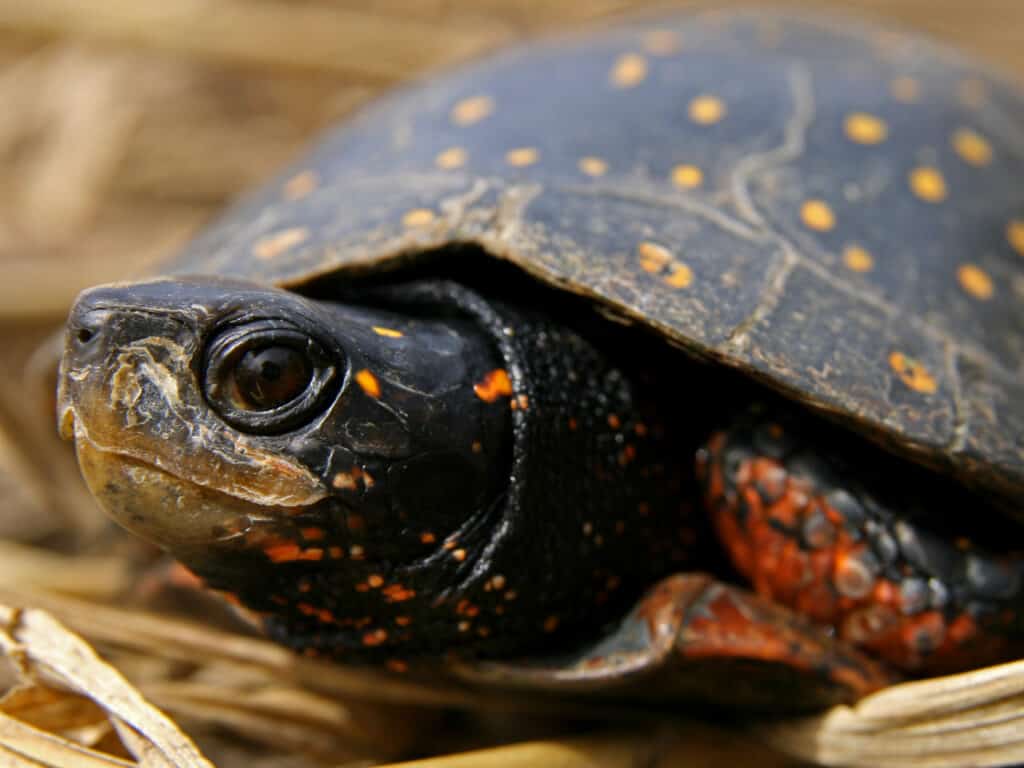
While it’s the state reptile of Rhode Island, spotted turtles live throughout the east coast of the United States.
©Ryan M. Bolton/Shutterstock.com
Last but certainly not least, the spotted turtle takes the title of the state reptile for Rhode Island. Spotted turtles are little, aquatic turtles that get their name from the yellow spots that appear on their dark shells.
The loss, modification, and dispersion of this habitat pose a threat to the species, which is found in wetlands all throughout the United States east coast and in the Great Lakes region.
Over time, climate change may have an effect on the wetlands’ hydrology, which the species relies on. Populations of spotted turtles are also in danger from poaching and gathering for the domestic and international pet trade.
The photo featured at the top of this post is © Lynda McFaul/Shutterstock.com
Thank you for reading! Have some feedback for us? Contact the AZ Animals editorial team.






